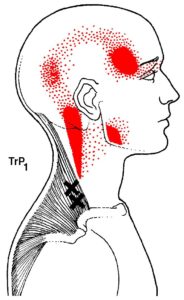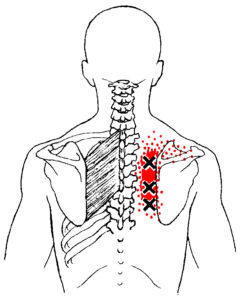Dry Needling Therapy
Dry Needling is a modern treatment technique for muscle and nerve problems including nerve pain and muscle trigger points. This technique involves the insertion of filiform (acupuncture) needles into a local area of muscle tension or nerve irritation. When an acupuncture needle is inserted into tissue with proper technique the muscle will often “twitch” and then release. In this way, Dry Needling can “reset” a muscle, reduce inflammation and return the nerve-muscle system it to a health and relaxed state. This process involves stimulating both the muscle tissue and its related motor nerve, however the effect of stimulating the motor nerve is probably the most critical in returning a muscle to a healthy lengthened state. Many dry needling practitioners consider dry needling a type of “Myofascial Therapy” where the treatment method works on both the muscle and the fascia at the same time.

There are a number of Dry Needling approaches including: Intramuscular Stimulation (IMS by Dr Chan Gunn), Superficial Dry Needling (SDN), as well as others, but all systems of dry needling have some common features:
- Dry needling is used to resolve muscle “knots” or “trigger points” that are shortened fibers of a muscle belly causing pain and dysfunction. Trigger points will often cause both a.) pain and b.) restricted range of motion in joint(s) related to that muscle.
- Dry needling is used to stimulate the motor nerve of a muscle to reset the neurological homeostasis of that nerve and muscle. This reset of the motor nerve can be done for overactive nerves (causing tightness and trigger points) and also for under-active nerves (causing weakness and muscle inhibition).
- Dry needling practitioners perform an assessment to identify which muscles and nerves are involved in the patient’s dysfunction. After a diagnosis is established the practitioner will generally treat the muscles directly with a filiform needle, trying to elicit a “twitch” response.
Who can benefit from dry needling? Muscles can develop trigger points due to trauma or overuse, where muscle fibers shorten causing pain and limited range of motion (ROM). If left untreated, shortened muscles can become locked into an inflammatory state which may be experienced as local or radiating pain. These irritated muscle fibers typically contains a sensitive node in the belly of the muscle called a Trigger Point.

Dry Needling performed with a sterile, thin, single-use stainless steel needle. Most patients do not feel the needle penetrate the skin, but there can be a bit of muscular discomfort when the trigger point is activated. If the muscle is currently in spasm and has an active trigger point, the patient may feel a sensation like a muscle cramp of twitch, this is called the “twitch response”.
Typically, lasting results are seen within 2-4 treatments but the number of sessions needed varies depending on the specific condition and the patient’s overall health. Dry needling is a quick and effective effective treatment for acute muscle pain and it is also effective for chronic pain, although chronic cases will require more time and treatment to see good results. It can also be used following an injury or post-surgery. This technique has few side effects and is preferred as a means to find and eliminate neuromuscular problems that may lead to pain and degeneration.
Eric Schmidt, LAc specializes in Myofascial Dry Needling to give patients great results and full recovery from muscular problems. Most of the time the improvements from Dry Needling are more rapid than from traditional acupuncture treatment. You may also want to read our Dry Needling FAQ for more information.
An Introduction to Dry Needling – Video by Eric Schmidt, LAc:
Our YouTube Channel with more videos is linked below:
Meridian Health Clinic channel on YouTube
Note: Due to accessibility concerns our current videos are only hosted on YouTube and no longer available on this website:
(Specifically, MHC strives to measure compliance against the Web Content Accessibility Guidelines (WCAG) 2.1, Level AA and Web Accessibility Initiative Accessible Rich Internet Applications Suite (WAI-ARIA) 1.1, as related to Section 504 of the Rehabilitation Act of 1973 and Title III of the Americans with Disabilities Act of 1990.)
Get started with a dry needling session today:
Training for Dry Needling Therapists:
Below is a summary of the difference in training between a licensed acupuncturist (L.Ac.) and other healthcare providers seeking to add Dry Needling to their scope of practice:
- Physical therapists (PTs) performing “dry needling” have NO MINIMUM TRAINING. It is currently legal for PTs to perform dry needling in states including: Nevada, Colorado and North Carolina. Often PTs will perform dry needling on patients with as little as 30 hours of training.
- Chiropractors take 200 hours of required acupuncture-specific training to perform dry needling.
- Medical doctors need 300 hours of acupuncture-specific training, as required by the American Board of Medical Acupuncturists.
- California Licensed Acupuncturists (LAc) have at least 3,000 hours of acupuncture-specific training, a 3 Year Professional Masters Degree.
